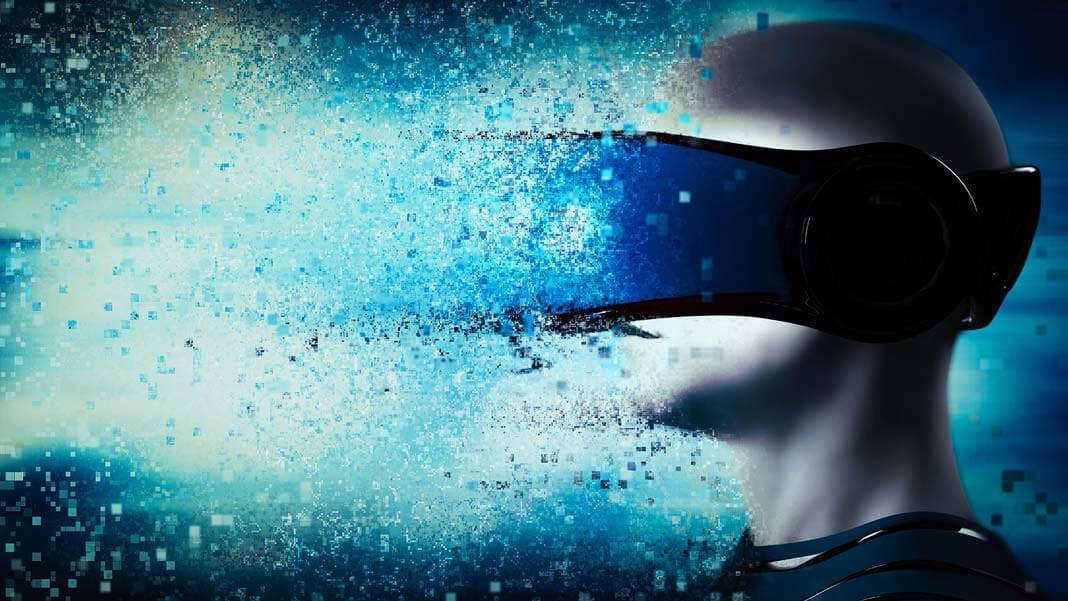How Virtual Reality Can Transform Who You Are

Share
In virtual reality, as far as our brains are concerned, it’s quite possible to become an entirely different person.
At VR Days Europe, an annual gathering of augmented and virtual reality professionals, Mel Slater, professor of virtual environments at the University of Barcelona, suggested this theory during his presentation, where he offered some of the most thought-provoking ideas of the conference.
“Virtual reality can transform not just where you are, but who you are,” he told the audience.
Slater’s work is primarily focused on a concept called “virtual embodiment”—the idea that in virtual reality, our brains can quickly absorb new virtual bodies as our own. To conduct his research, he often uses what are called “body ownership illusions,” which as he showed, can produce some astonishing changes in our attitudes, beliefs, and behaviors.
Tricking your brain into becoming someone else can, apparently, make you smarter, kinder, and a less sucky person.
For example, taking on the body of Albert Einstein was shown to increase a person’s cognitive task performance and was especially effective for people with low self-esteem. Becoming a VR version of a domestic violence victim can help rehabilitate abusive offenders. And through becoming a different race, participants in one study reduced their unconscious racial bias.
But how are our brains so easily fooled into becoming someone else? “Our brains seem remarkably plastic in accepting radical changes,” Slater said.
It turns out, virtual reality isn’t even a necessary requirement to produce some remarkably convincing body ownership illusions. You may already be familiar with the famous rubber hand illusion, a concept Slater briefly touched on during his intro. The trick works by placing your real hand on a table out of sight behind a partition wall, while a visible rubber hand is placed on the same table in front of your field of view. Someone then applies some form of tactile touch to your real hand and the rubber hand at the same time.
“The felt touch and seen touch are synchronous. So there is a contradiction between the felt touch in one place and the seen touch in another,” Slater writes.
Our brains don’t appreciate these sorts of inconsistencies and seek to address the situation by developing the easiest plausible explanation—in this case, assuming that the rubber hand is now actually a part of your body.
Since vision is such a powerful sensory input for humans, visual displays like VR headsets can be an even more powerful tool to create these kinds of body ownership illusions. By seeing a virtual body mimic your exact movements reflected in a mirror, the brain quickly assumes that’s you. To create this illusion, effective body tracking is needed in addition to the VR headset.
Be Part of the Future
Sign up to receive top stories about groundbreaking technologies and visionary thinkers from SingularityHub.


In one of the more impressive demonstrations during his VR Days lecture, Slater showed how adult participants were made to feel they inhabited the body of a small child. The study found that the participants with the child bodies began to self-identify with more child-like attributes than the participants in the adult body condition.
In another demo, a study was shown in which mothers were placed in the body of a four-year-old child and made to interact with a virtual “mother” avatar which responded in either a kind and positive or negative and abrasive way. The "negative mother” led to increased feelings of fear in the participants, and it is hoped that these kinds of experiences can improve empathy in parents and lead to positive outcomes for children.
Across the many studies shown involving virtual embodiment, people consistently demonstrated a capacity to absorb their new identities instinctively and quickly. Those new identities then had a powerful effect in immediately shaping their attitudes about the world.
Slater then raised the question: if our bodies and thus our beliefs can be so plastic, what makes us who we really are? “Our attitudes, actions, cognitions, and intentions—perhaps these are changeable using these techniques,” Slater concluded.
That would be quite a powerful outcome in the use of virtual reality technology. Can we really transform who we 'are'?
Slater was keen to point out the strong ethical considerations that must accompany these methods, since these same approaches could theoretically be used to generate harmful attitudes and behaviors as well. But given the current studies taking place in his lab, the results do show a collection of surprisingly favorable uses.
Perhaps, by becoming someone new in virtual reality, we have the chance to become better people. But using VR for that is, of course, up to us.
Image Credit: PHOTOCREO Michal Bednarek / Shutterstock.com
Aaron Frank is a researcher, writer, and consultant who has spent over a decade in Silicon Valley, where he most recently served as principal faculty at Singularity University. Over the past ten years he has built, deployed, researched, and written about technologies relating to augmented and virtual reality and virtual environments. As a writer, his articles have appeared in Vice, Wired UK, Forbes, and VentureBeat. He routinely advises companies, startups, and government organizations with clients including Ernst & Young, Sony, Honeywell, and many others. He is based in San Francisco, California.
Related Articles

AI Can Now Design Proteins and DNA. Scientists Warn We Need Biosecurity Rules Before It’s Too Late.

Kids With Spinal Muscular Atrophy Show Dramatic Improvement With FDA-Approved Gene Therapy

These Were Our Favorite Tech Stories From Around the Web in 2025
What we’re reading
